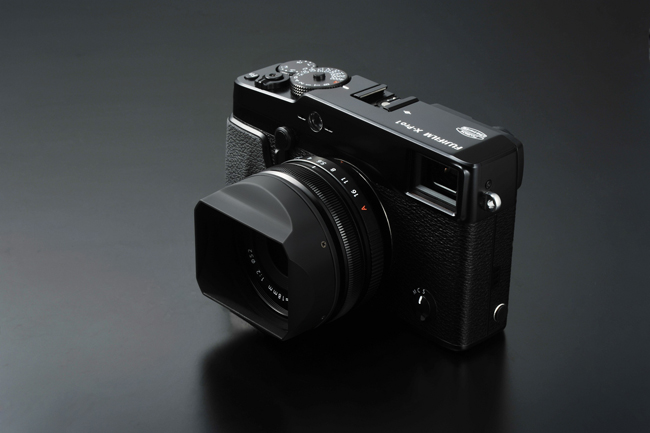Why Fuji Has Got It Right
 I love DSLR's like the next guy, they're great tools and they get the job done with stunning results. Nikon, Canon, Sony and co. are getting it right in the DSLR market, but what I'm talking about here is the medium sized cameras that sit between point and shoots and DSLR's, often called compacts or system cameras. Rangefinders were made by lots of manufacturers back in the day, but the only option for a camera of that style or quality for years, has been the Leica M series. But not everybody can afford thousands on a camera, especially if you already spend thousands on a DSLR system. I love my Yashica rangefinders, but film just doesn't do it for me anymore. So I'm thrilled and excited about the direction that Fuji's is taking.
I love DSLR's like the next guy, they're great tools and they get the job done with stunning results. Nikon, Canon, Sony and co. are getting it right in the DSLR market, but what I'm talking about here is the medium sized cameras that sit between point and shoots and DSLR's, often called compacts or system cameras. Rangefinders were made by lots of manufacturers back in the day, but the only option for a camera of that style or quality for years, has been the Leica M series. But not everybody can afford thousands on a camera, especially if you already spend thousands on a DSLR system. I love my Yashica rangefinders, but film just doesn't do it for me anymore. So I'm thrilled and excited about the direction that Fuji's is taking.
I bought my Fujifilm X100 in March 2011 and have carried it with me ever since. It got me back into street photography in a big way, which led to starting the 35mmStreet blog. It's also the perfect tool for one of my 2012 goals, which is to shoot documentary projects. The X100 is not perfect, but it is a very special camera and I feel lucky to be around at this point in time, shooting with a camera that the next generation will look back on and wish they had something like it.
That brings me to the point of this blog post (at last, I hear you say). I think Fuji have got it right in their X series. The viewfinder is an absolute joy, the glass is fantastic and the sensor/processor combination is really amazing. We all want low noise at hi ISO's and the X100 delivers that and still manages to keep it's great colours. The fixed 35mm equivalent lens has been great for me and I love the fact that you know how the image will look in the viewfinder even before you bring it up to your eye. But the manual focus is useless and there have been plenty of times that I've had to bring along a DSLR because I knew I wouldn't get close enough for a 35mm. So enter the new X-Pro 1. This looks like the camera that you can really take anywhere with you and be confident that it will tackle almost all types of photography.
So why are Fuji getting it so right and other manufacturers are getting it, well, not so right. The micro four thirds system have similar sized bodies, but smaller sensors. I personally wouldn't buy a camera with a sensor smaller than a 1.5 crop factor. Ideally, all cameras would be full frame. How many photographers in the film days shot with 110...none that I know of, it was all 35mm and up. Some of Fuji's hype for the X-Pro1 is that it will have the quality of full frame from an APS-CMOS sensor. This is a big claim, but Fuji has come up with another breakthrough. They have taken the low pass filter out which gives a much better resolution and a sharper image. They have been able to do this because the new X-Trans CMOS sensor has 6x6 pixel units instead of the usual 2x2, that means that the RGB sites can be more random, which gets rid of the moire effect.
The X100 and the X-Pro1 both have the hybrid viewfinder, in fact the latter has the second generation version that slides lenses in to compensate for different focal lengths. The Optical viewfinder is the best feature on these cameras and looking through the X100's for the first time is a memory that's burned into my brain forever. Meanwhile, the competition have either no viewfinder, a small plastic hole or an electronic viewfinder. Even the ultimate rangefinder, the Leica M9 could do with implementing some of Fuji's viewfinder technology. But having said that, there's not much I wouldn't do for a black M9-P with a 35mm Summilux.
Old school dials is another thing that Fuji has got right. Having to wade through a menu system is both a waste of time and not feasible when out shooting. In fact, another Fn (function) button would be really helpful. It's great that they have recessed the exposure compensation dial into the body and improved the buttons as well. It looks like Fuji listen to feedback from customers. Let's hope they have been listening when it comes to the poor manual focus.
So I'll be ordering the X-Pro1 with the 35mm and the 60mm lenses. I'll still have the X100, so I'll wait to see if I need the 18mm, but I'll probably end up getting it. There will be zoom lenses at the end of 2012, but I'm a prime shooter, so the lenses that will be available at the release of the camera are spot on for me. Fuji has made it clear that this is just the start of this system, there will be more cameras and lenses coming. Keep your eyes on this blog for a review as soon as the X-Pro1 arrives.
